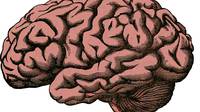
What are the various types of remembering?
The various acts of remembering are not all exactly alike psychologically, but they have elements in common. Remembering is, in effect present knowledge of some event or fact that has occured before. Acquiring is the first step in remembering, followed later by recalling or recognition of the event.
Forgetting is the difference between what we have learned and what we have retained.
The act of recalling is a response to stimulus. When acquiring takes place, a stimulus and response occur together; at the same time of recall, the stimulus tends to evoke the same response with which it was associated previously.
Recognition is the act of measuring retention in which the subject being given a list of items interspersed among new ones is asked to identify those that were in the original list as in a multiple-choice examination.
Comparing motor learning and verbal learning
In general, motor learning is retained longer and with a higher degree of skill than verbal learning. Details in memory fail rapidly.
Example: One can ride a bicycle after years of not being on one than to recall the words to songs. Most of what we learn verbally is forgotten soon after it has been learned. Increasing practice usually increases the amount learned.
Why do we forget?
Even with long periods of disuse verbal material and image may be retained. However, we forget because:
1. Other things come in the way of remembering.
2. We did not learn well in the first place.
3. Emotional factors block the retrieval process.
4. We have failed to put in adequate review or rehearsal as in the case of academic situation.
Remember, learning is more than just reading a textbook or looking over notes. Learning requires active rehearsal of what is to be learned. This means recalling relevant information, looking for general principles which hold together the details, memorizing key facts, asking questions and aswering them. All these need ones own organization.
What is positive transfer?
Positive transfer, also techincally called proactive facilitation, results when a prior task and the present task have similar stimulus response combinations. When two learning situations have nothing in common, there is no transfer.
We have negative transfer, proactive inhibition, when there is interference of a prior learning with the learning of a new task. The forgetting that we experience in everyday living can be largely due to proactive inhibition than children are because older people have a large storehouse of previous learning.
How does attitude affect remembering?
People tend to remember those things favorable to their own attitudes and to forget those that are unfavorable. They also tend to rehearse in our telling and thinking about pleasant affairs, but not the unpleasant ones. Clinical evidence shows that very painful experiences are more difficult to recall than pleasant ones. Example: Readers of newspaper/magazine advertising, remember best material they think worthwhile and quickly forget materials to which they do not personally relate. One may ask whether time alone affects memory. As time passes, memory tends to decreases. However, this may be less important than interference effects.
All learning implies memory. There are two basic distinctions about memory. The second distinction deals with two types: 'short term' and 'long term'.
What are the stages in the memory process?
How is each stage described?
Encoding - This refers to the transformation of physical information into the kind of code that memory can accept.
Storage - This is the retention of the encoded information.
Retrieval- This refers to the process by which information is recovered from memory when it is needed.
Do the 3 stages of memory operate in the same way in all memory situations?
Research studies show that they don't operate in the same way. They tend to differ between situations that require us to store material for a matter of seconds. This is called short-term memory. Those that require us to store material for longer intervals - from minutes to years is called long-term memory.
A good deal of research indicates that short-time memory tends to favor an acoustic code for verbal materials like digits, letters, and words, more than the visual code. The visual code fades quickly and is soon dominated by the acoustic code. To store nonverbal items like pictures that are difficult to describe , the visual code may become more important. It is also possible that one can store information in codes like with other senses as touch, and smell. Example: The pungeont odor of sour milk seems to stay witn us for a few seconds after we experience it.
What is the storage capacity about short-term memory?
The storage capacity is limited. On the average, the limit is 7 items, give or take two (7+2) Some people store as few as five items; others can hold on to as many as nine. This constancy has been known since the earliest days of experimental psychology by Ebbinghaus (1885). The Millern (1956) was so struck by this constancy and referred to it as the magic number 7.
The principle of displacement explains how an item in the short-term memory is lost as the new item displace it. It appears then that what is in the forefront of our memory must soon give away to subsequent information. There is one exception as shown in the process called rehearsal. It amounts to paying attention to what is presently in short term memory rather than to something outside the world. Rehearsing protect the information from displacement, because the more we rehearse, the less we encode and the less opportunity for displacement.
What are chunks?
It appears that an item is the largest meaningful unit we can find in the materials presented to us. Such units are called chunks. The capacity of short-term memory is best expressed as 7+2 chunks (Miller, 1956). Letters can be grouped into phrase chunks.
What codes are needed for long-term memory?
Long-term memory tends to maintain meaning. Meanings are encoded in terms of mental picture or image. This is known as imagery code. The kind of information or idea that is coded is known as semantic code. Evidences show that both can capture the meaning of an item and both codes play a role in long-term memory.
We can also use an acoustic code in long-term memory. Tastes and smells are also coded in long-term memory. Tastes and smells are also coded in long-term memory, however, coding by meaning seems to result in the best memory. If one concentrates on the meaning of a point in a textbook rather than the words involved, the better you will recall it.
What are the causes of forgetting from long-term memory?
In long-term memory we must consider storage and retrieval together. Poor memory seems to result from a loss of access to the information, rather than the loss of information itself. To failure to find the book does not necessarily mean it isn't there; you may be looking in the wrong place, or it may simply be misfiled and therefore inaccessible. Retrieval failure which means that the information is there but can't be found are less likely to occur when the items in storage are organized and when retrieval cues are used.
What are the chances of successful retrieval?
1. Organize the information for storage
Example: Suppose you were at a meeting, where you met people of various professions - doctors, lawyers, teachers, and journalists. When you later tried to recall their names, you would do better if you organized your recall by profession. A list of words or names is easier to recall when you can sort them into categories (Bousfield 1953).
2. Ensure that the context in which we retrieve information is similar to the context in which we encoded it.
Example: It is good bet that your ability to retrieve the names of your classmates when you were in the grade school would improve if you where to walk through the corridors of your elementary school.
What factors decrease retrieval?
1. Interference - There are 2 forms:
a) Retroactive interference - This is seen when the learning of new materials interfaces with our memory of old ones.
b) Proactive interference - This is illustrated when previously learned material interferes with our attempt to remember new information.
2. Emotional factors - Anxiety does not directly cause memory failure. Rather, it cause, or is associated with extraneous thoughts and these thoughts cause memory failure (Holmes 1974). Freud's repression hypothesis (1915) brings up new principles. This theory proposes that some emotional experiences in childhood are so traumatic that to allow them to enter consciousness many years later would cause one to be totally overwhelmed by anxiety.
How many memory be improved?
1. Using imagery during the encoding process - This is the basic principle underlying mnemonic system. An example of this system is the loci method. Items are recalled by making a mental walk through different locations in your house. Each location will retrieve an image and each image will retrieve a word. Another method is the key-word method of learning. This is very applicable in learning a foreign language.
2. Using hierarchical organization - This can be by analyzing the meaning of the items as deeply as possible during the encoding.
3. Improve retrieval by practicing it. This can be done by asking yourself questions about what you are trying to learn. Example: Reading an assignment and asking yourself question about it.
How effective are the various types of incentives as motivation to learning?
The types of incentives include: praise and reproof; reward and punishment; knowledge of results; and competition and rivalry?
1. Praise and reproof. Studies showed that reprimands before others ridicule and sarcasm generally lead to unfavorable results while public commendation shows improvement in learning, Praise given immediately is more effective than praise delayed even just a day after work has been accomplised.
2. Reward and punishment. Studies showed that material rewards for young children and financial aid to college students lead to effective learning. It is possible for punishment to exercise a favorable effect in producing improvement to learning especially if the learner understand the purpose of the punishment. Generally, this type of incentive is not effective.
3. Knowledge of results. Studies showed that informing the students of their progress showed more improvement in learning than those who were not informed.
4. Competition and rivalry. Studies showed the effectiveness of group rivalry but individual rivalry proved a more effective incentive.

















